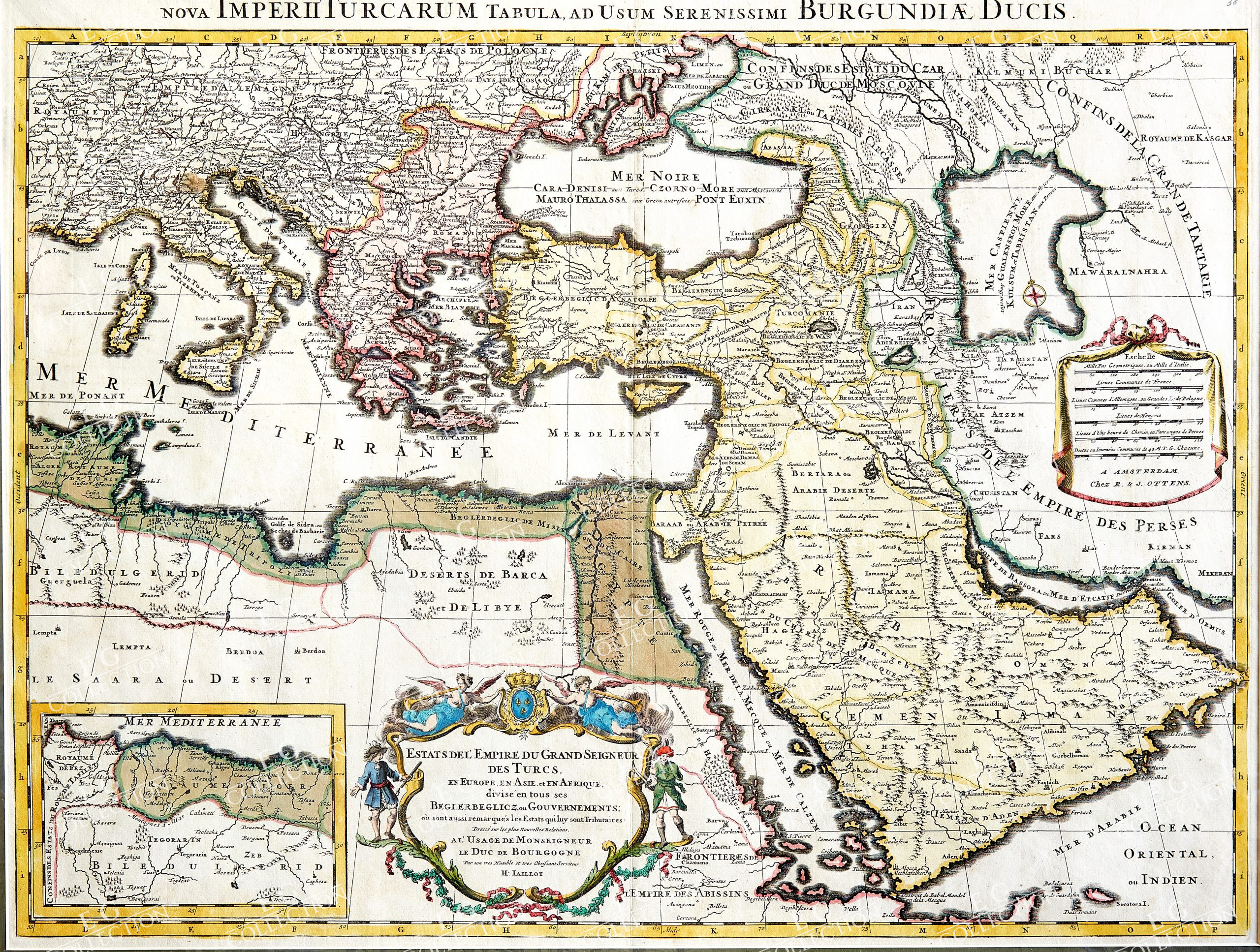JAILLOT
NOVA IMPERII TURCARUM TABULA, AD USUM SERENISSIMI
BURGUNDIAE DUCIS…
ESTATS DE L’EMPIRE DU GRAND SEIGNEURBDES TURCS EN EUROPE, EN ASIE ET EN AFRIQUE…
JAİLLOT, Hubert Alexis (1632-1712)
Paris, c.1700
47 x 61.5 cm
Jaillot (1632-1712)
Alexis Hubert Jaillot ( 1632 -1712) was one of the most important French cartographers of the 17th century. In 1665 he married the daughter of the cartographer family Berey. After the death of his brother-in-law, Nicolas II Berey (1640–1667), he bought from his sister–in– law the Berey map collection. This was the beginning of his career as a publisher. Later, in 1670, he had a partnership with Nicolas Sanson’s son and re-published and re-engraved many of his maps. The atlases and maps mainly have been printed by Pierre Mortier in Amsterdam and Paris.
Decorative map shows the former Turkish Empire ( Ottoman Empire) with Greece, the eastern Mediterranean Sea, with Northafrica, Egypt, total Arabia, turkey, the Caspian sea to Tartaria. On an inset map the ” kingdom” of Algeria. Figurative cartouche showing Süleyman I with his entourage.
The area of today’s Turkey has been populated since the Paleolithic. The name of the Turks comes from Central Asia. The immigrants from whom Turkey got its name were the Oghusen and came from the area around the Aral Sea. The Turkish settlement of Anatolia began with the arrival of the Seljuks in the 11th century AD. Around 1299, Osman I, Gazi (1259–1326) founded the Ottoman dynasty named after him, from which the name of the Ottoman Empire (also called the Turkish Empire) ) derives. After the conquest of Constantinople in 1453, the Ottomans ruled over large parts of the Middle East, North Africa, the Crimea, the Caucasus and the Balkans. After the expansion of the Ottoman Empire into Europe was brought to a standstill near Vienna and the Ottoman army was defeated there on Kahlenberg in 1683, the empire was pushed back further and further from its European territories to the tip west of the Marmara Sea, between Istanbul and Edirne. The national movements that emerged from the 19th century onwards led to a gradual fragmentation of the empire, the occupation of Turkish North Africa by European powers and finally the defeat in the First World War resulted in its ultimate decline.
$ 1.500,00
1 in stock




 No products in the cart.
No products in the cart.